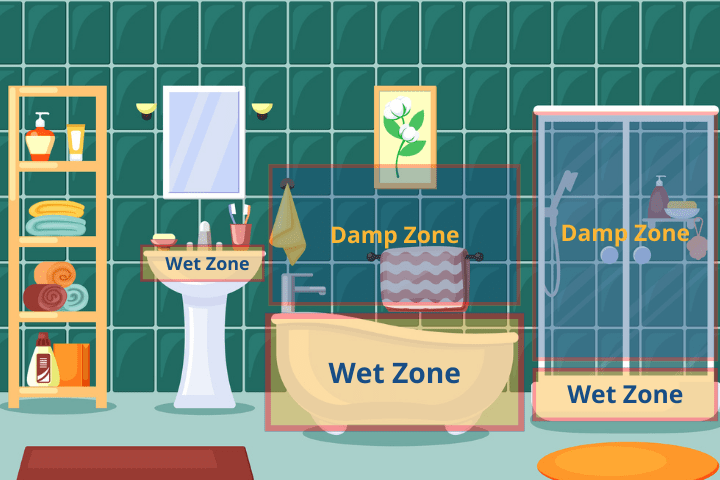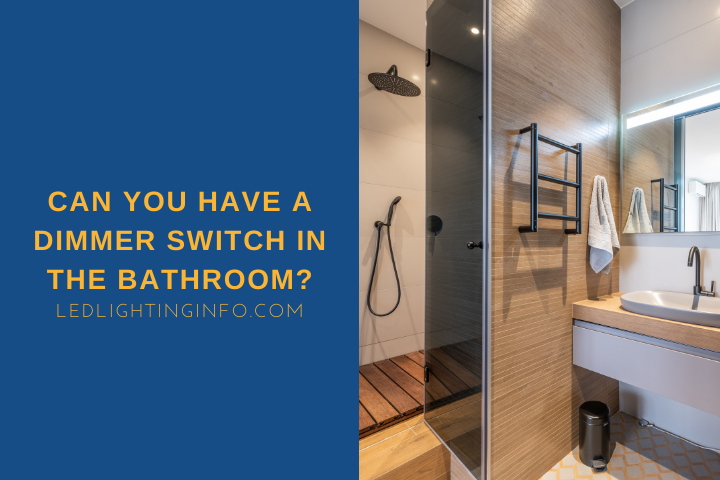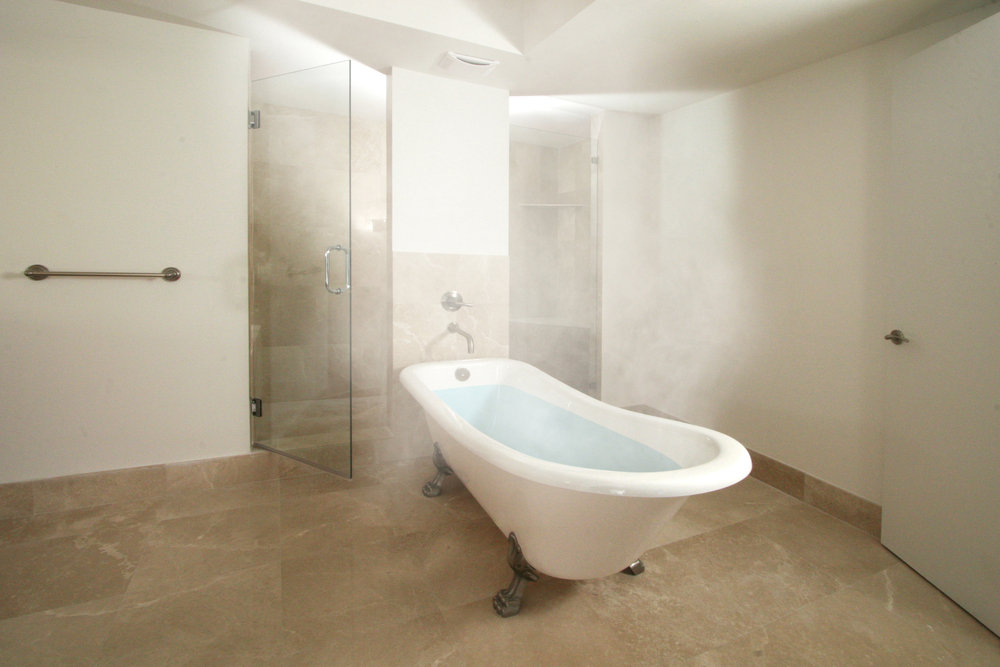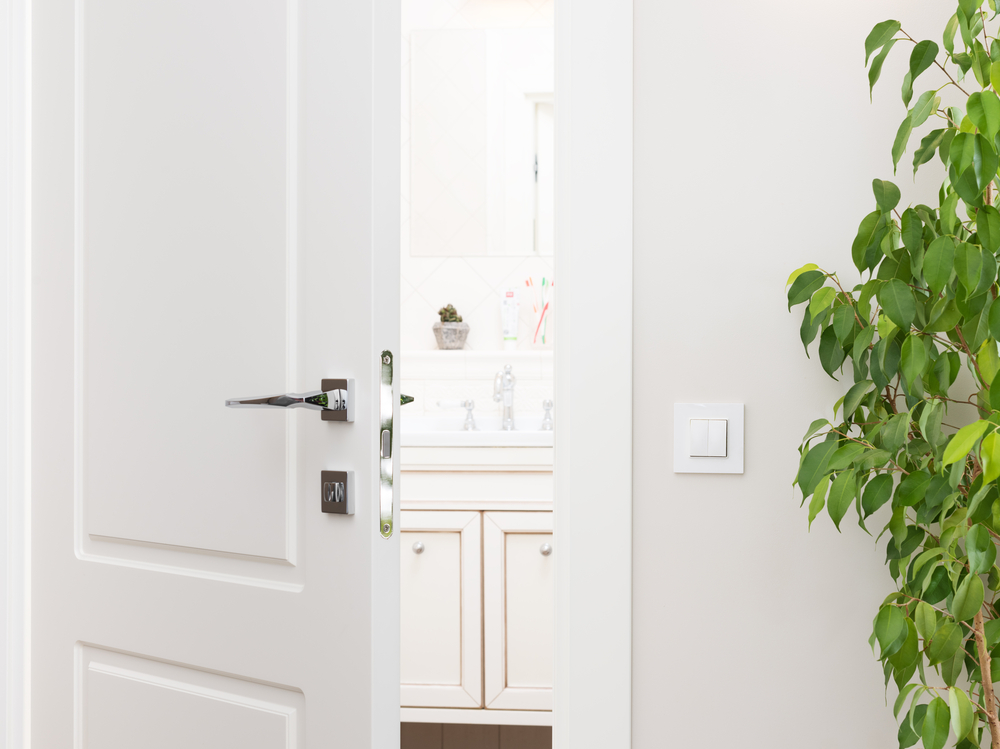Modern bathrooms are attractive, and you don’t want to spoil them with dazzling bright lights that ruin the atmosphere – especially if you’re hoping to take a nice relaxing bath.
If you need to make a trip to the bathroom in the middle of the night, you don’t want to be blinded and completely woken up when you’ve been used to having the lights off in your bedroom.
So can you install a dimmer switch in a bathroom to help with that?
You can have a dimmer switch in the bathroom, provided it’s installed far enough from damp zones, and it should be sealed to protect from dampness. Dimmer switch pull cords are a safer option. You can also get or install the dimmer outside the bathroom.
Let’s take a look at:
- Whether you can put a dimmer in a damp environment
- The different options you have for a dimmer in the bathroom
- Things to lookout for
Can I Put a Dimmer Switch in a Damp Environment?
People often assume a dimmer switch is a much more complicated electrical component than a regular light switch.
While there is more to a dimmer switch, since it has to regulate the current to dim the lights, they are still very close to a regular light switch.
Therefore, they are wired into a circuit in the same way.
So the question isn’t so much whether you can put a dimmer switch in a damp environment – more, can you put any kind of light switch in a damp environment?
The answer is a heavily qualified yes. Depending on where you live, you can follow the guidelines of the electrical code.
In the US, those guidelines are set by the NEC. You can read the code here, but you’ll need to register.
But if you live in the UK, you can’t have a dimmer or any light switch in the bathroom unless it’s a particular type.
Essentially, the code states that you can’t install any electrical lights or switches within 600mm (2 feet) of a bath or shower – these are considered damp zones.

As long as you avoid installing a dimmer switch within these wet or damp zones, and you make sure it’s a suitable dimmer for the bathroom, then you will be fine.
What Are the Different Options of Dimming in the Bathroom?
There are three main options when installing a dimmer switch for your bathroom.
The first of these is a regular dimmer switch.
Again, no regulations stop you from installing a light switch within a bathroom, so as long as you install it well out of the way of any damp areas, you are technically up to code.
However, it’s not the safest option.
Even if you take care to get the installation done correctly, there’s a chance that steam could get into the switch through any gaps in the switch.
Dimmers naturally have more small gaps due to the actual slider for the dimmer.
The second option is a safer choice – a pull cord dimmer.
These are more commonly available in the UK, where regular light switches aren’t permitted, and they work like any pull cord.
The longer you pull on the cord, the dimmer the lights get.
The third option is far the safest, and it works no matter where you are in the world – install the dimmer switch outside the bathroom.
Then you don’t worry about where it’s located or whether it gets wet.
The only inconvenience is that you have to remember to switch it on before you enter the room, but that quickly becomes a habit even if you aren’t used to it.
Main Watchouts When Installing a Dimmer Switch in the Bathroom

If you’re installing any kind of light switch in the bathroom, there are a few things you need to be sure of to keep your electrical system safe.
Firstly, make sure the dimmer switch is compatible with the lights in your bathroom.
Not all dimmer switches are compatible with all lighting types.
If your bathroom has older halogen bulbs, then most dimmers will be fine, but you’ll need a special dimmer for CFL lights or LEDs, and your LED lights need to be dimmable ones.
Secondly, if you’re planning on having the switch inside the bathroom, ensure you have checked your local electrical codes and measured to install it safely.
If you don’t and there’s ever a serious problem, not only could it be hazardous, but it could also invalidate any home insurance you have too.
Once the switch is installed according to the guidelines, use sealant around it.
That’ll help prevent moisture from finding its way behind the switch and potentially shorting the electrics.
Make sure you test the switch works properly before you seal it, though – you don’t want to have to redo the job if you find out you’ve wired it incorrectly.
It’s also crucial that your vent is working in the bathroom because, even with a sealed switch, there may be gaps that steam could get into.
You’ll want to minimize the moisture left behind after a shower so ensure that your vent works effectively.
Don’t forget to read: How To Wire Bathroom Fan And Lights Separately?
Final Words
Installing a traditional dimmer switch is doable in a bathroom, but it’s really important to make sure you follow your local regulations, keeping it away from damp areas as much as possible.
Pull cord switches are safer than standard ones if you can find one in your area, but the safest thing you could do would be to install the dimmer outside the bathroom.
Many countries already do this for safety, and it’s no less convenient.
Just have it close to the door so you’re always walking past it as you enter.
Have you installed a dimmer switch for your bathroom lights?
How did you go about it?



